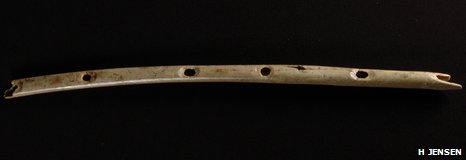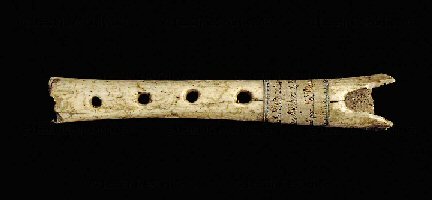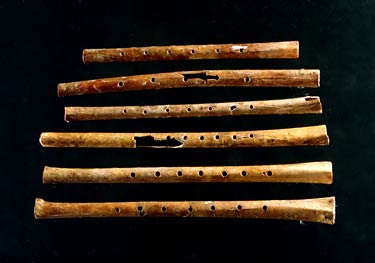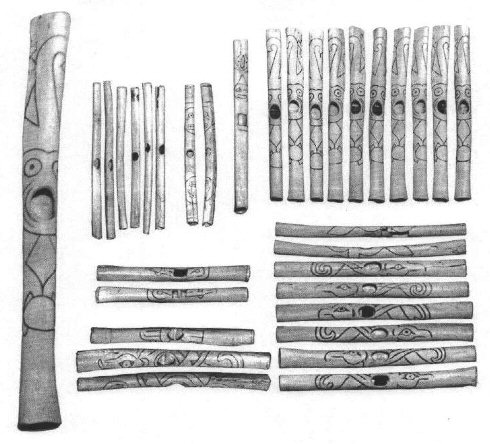Vultures and condors, with their keen eyesight, were considered expert at finding lost objects. Among the Western Mono and Yokuts tribes, "money finders" wore full-length cloaks of condor feathers that reputedly enabled them to find lost valuables (Snyder and Snyder 2000:38). This power was extended to finding missing persons among condor shamen of the Chumash.
California condors also played a part in cosmic events. Among the Chumash, condors or eagles were sacrificed based on which celestial body was prominently visible at the time of the ceremony. Eagles were selected for rituals concerned with the Evening Star (Venus), while condors were chosen for rituals associated with the planet Mars (Hudson and Underhay 1978:88; Simons 1983).
Caral-Supe: The discovery of 32 flutes made of Pelican and Condor Bones at Caral, echoes the Palaeolithic Old-world fascination with bird-bone flutes. Several horns made from Llama or Alpaca bones were also found. (3) The Caral-Supe civilisation, dated at c. 2,600BC is now recognised as a south American 'mother' culture.
The bone-flutes were found between the pyramids within the large sunken amphitheatre, with enough room for hundreds of people during community gatherings. The 32 flutes made of the wing bones of pelicans were tucked into a recess in the main temple. They were played by blowing into the central hole and covering either the left or right hand holes. And, in April 2002, they uncovered 37 cornets of deer and llama bones. "Clearly, music played an important role in their society,".
Based on the radiocarbon dating from [Solis 2001], the most likely date for the flutes appears to be 2170�90 BCE (Sample �Beta 134427 - Offering inside room on top of Piramide Mayor, Caral�).




 Jiahu:
(A cache
over over 30 bird-bone flutes). The 9,000-year-old flutes are
made from hollowed bird bones, and have between 5 and 8 holes.
Remarkably, one of the flutes is still playable. Scientists also
know of a 45,000-year-old, so-called Neanderthal flute made of a
hollow bear bone that was dug up in Slovenia in 1995. The
Chinese flutes are capable not just of single notes but of what
we would class as music
(4)
Jiahu:
(A cache
over over 30 bird-bone flutes). The 9,000-year-old flutes are
made from hollowed bird bones, and have between 5 and 8 holes.
Remarkably, one of the flutes is still playable. Scientists also
know of a 45,000-year-old, so-called Neanderthal flute made of a
hollow bear bone that was dug up in Slovenia in 1995. The
Chinese flutes are capable not just of single notes but of what
we would class as music
(4)